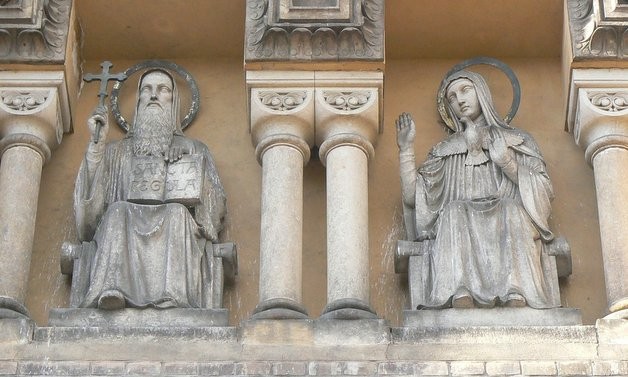Over the centuries God has raised up countless saints in his Church, leading men and women from all walks of life along various paths to sanctity. Particularly striking are those saints who came from the same family. One thinks, for example, of St. Monica, whose perseverance in prayer we can thank for the conversion of St. Augustine, one of the greatest minds in the history of the Church. Among the first disciples of Jesus, St. Andrew brought his brother Simon, who was to become head of the Church, to Jesus (Jn 1:40-42). In the fourth century, St. Basil the Great and St. Gregory of Nyssa, two of the great defenders and definers of orthodoxy, drew their inspiration from their elder sister, St. Macrina.
Given the common phenomenon of sibling rivalry, sibling saints are all the more remarkable. Whereas our natural inclinations urge us to competition and envy, these holy men and women spurred each other on to grow in holiness, with no hint of rivalry. Andrew could easily have become jealous that Peter became the leading member of Jesus’ inner circle (which included another pair of sibling saints, James and John the sons of Zebedee), but instead he rejoiced in his proper role, recognizing the gift of his own vocation. For all their brilliance, Saints Gregory and Basil deferred to the wisdom of their sister Macrina, learning from her the value of asceticism for growth in holiness. Today the Church celebrates a member of another saintly brother and sister pair, St. Scholastica.
St. Scholastica was the twin sister of her more well-known brother, St. Benedict of Nursia, the father of Western monasticism. In one of the texts for her feast day in the Liturgy of the Hours, St. Gregory the Great recounts a wonderful tale about these saintly siblings. One day St. Benedict and a few of his disciples visited St. Scholastica at her monastery. The group spent the entire day praising God and speaking of spiritual things, continuing over their evening meal, and as night drew on, Scholastica begged Benedict to stay and continue their conversation. Benedict refused, insisting that he must return to his cell for the night. Undaunted, St. Scholastica put her head down and began to pray. At once, a freak storm broke out, and Benedict and his companions had no choice but to stay. They ended up spending the whole night in conversation about the things of God, and the next day St. Benedict returned to his monastery. A few days later, St. Gregory tells us, Benedict saw Scholastica’s soul, in the form of a dove, flying off to heaven.
One can draw many lessons from this story, but the one that St. Gregory highlights is the superiority of St. Scholastica’s love: “It is not surprising that she was more effective than he, since as John says, God is love, it was absolutely right that she could do more, as she loved more.” One of the beautiful things about the story is how it illustrates the close relationship between love of God and love of neighbor, the two greatest commandments (Mk 12:29-31). The saintly siblings’ conversation that day was sparked by the love of God, but it wasn’t enough for Scholastica to meditate on this love by herself – she felt compelled to share it with her brother and his companions, even to the point of spending the whole night in conversation. St. Scholastica illustrates a point Pope Francis makes in Evangelii Gaudium:
We become fully human when we become more than human, when we let God bring us beyond ourselves in order to attain the fullest truth of our being. Here we find the source and inspiration of all our efforts at evangelization. For if we have received the love which restores meaning to our lives, how can we fail to share that love with others? (EG 8).
St. Scholastica allowed the love of God to transform her natural love for her brother into a supernatural love that knew no bounds. Imagine how the world would be transformed if all brothers and sisters accepted the love that drove St. Scholastica! Through her intercession, and through the intercession of all the Church’s sibling saints, may families be healed of sibling rivalry and set on fire to spread the gospel to all the world.
✠
Image: Sts. Benedict and Scholastica, St. Gabriel Church, Prague







